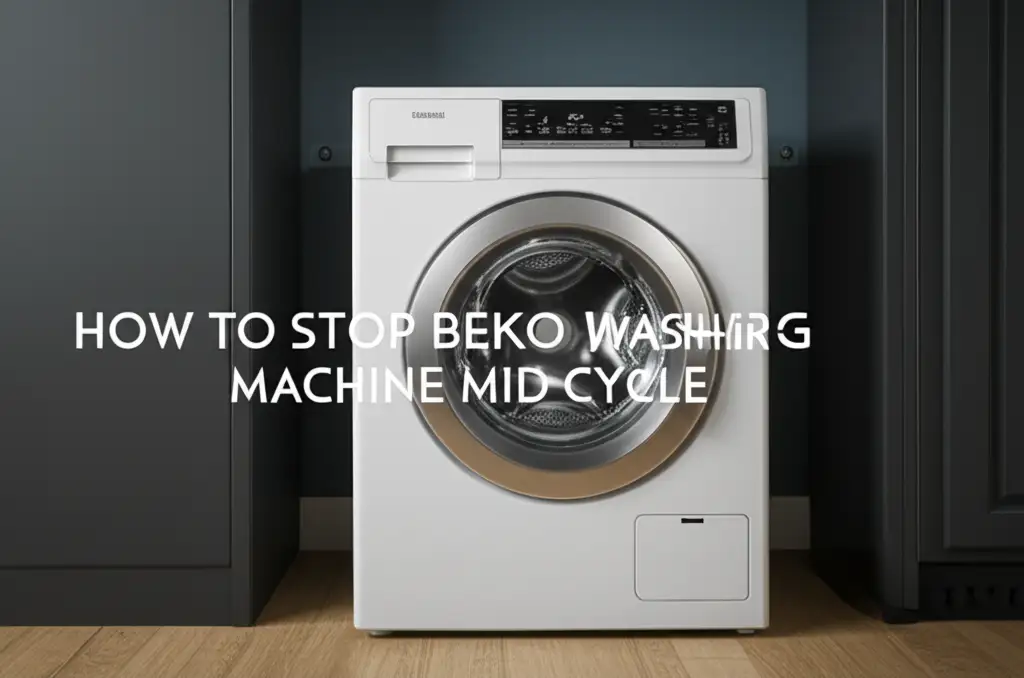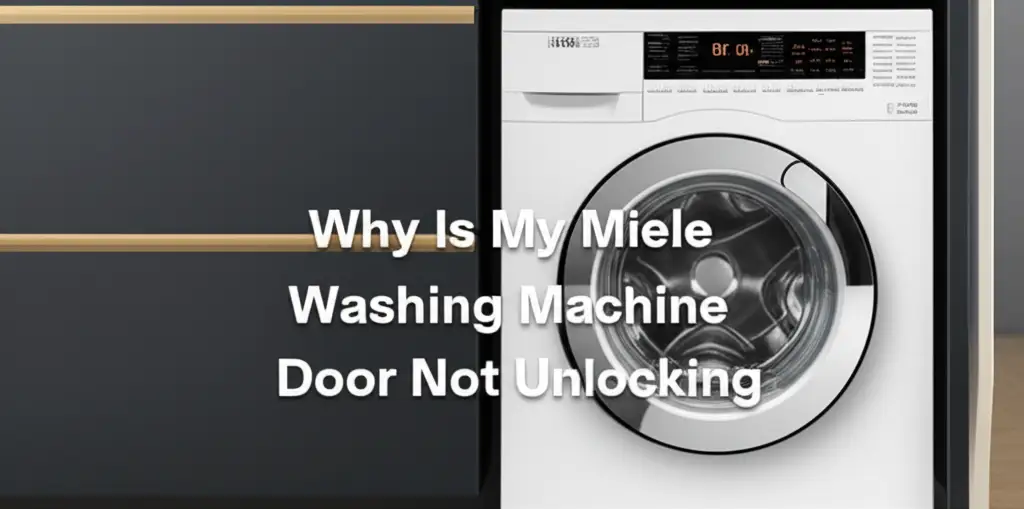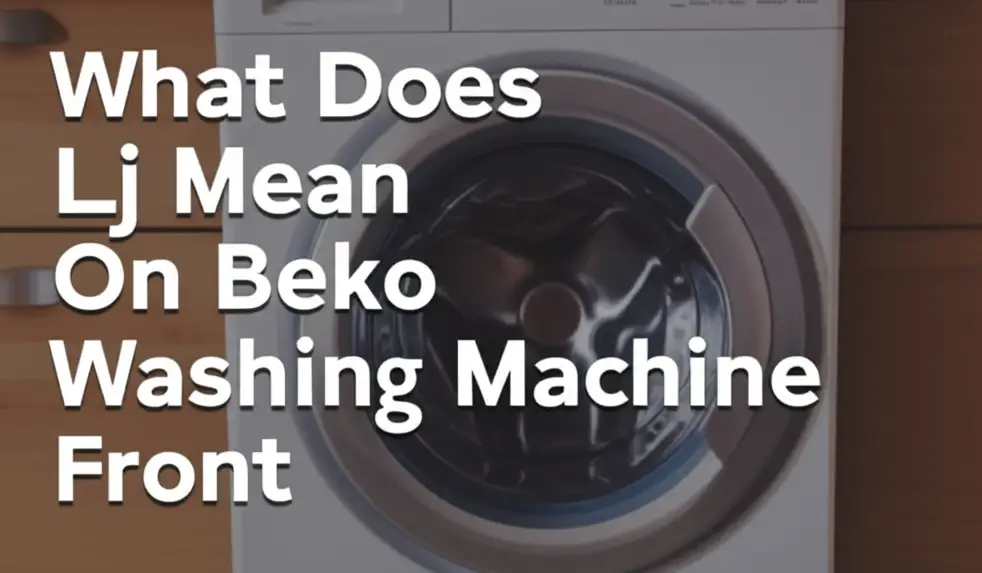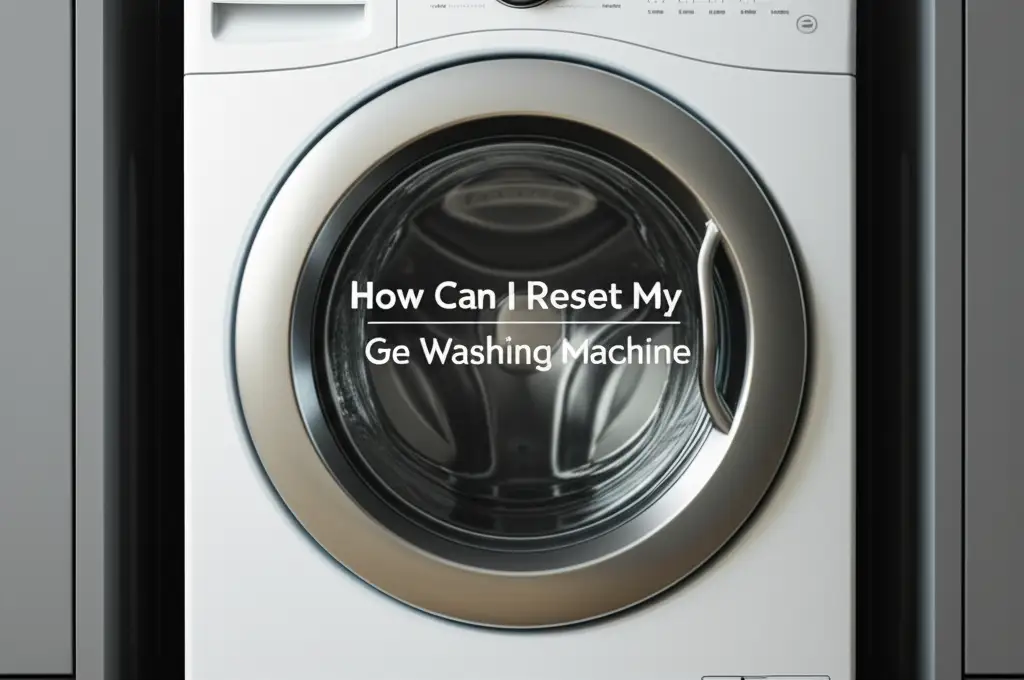· Todd Martin · Miele Maintenance · 20 min read
Why Does My Miele Washing Machine Have No Power
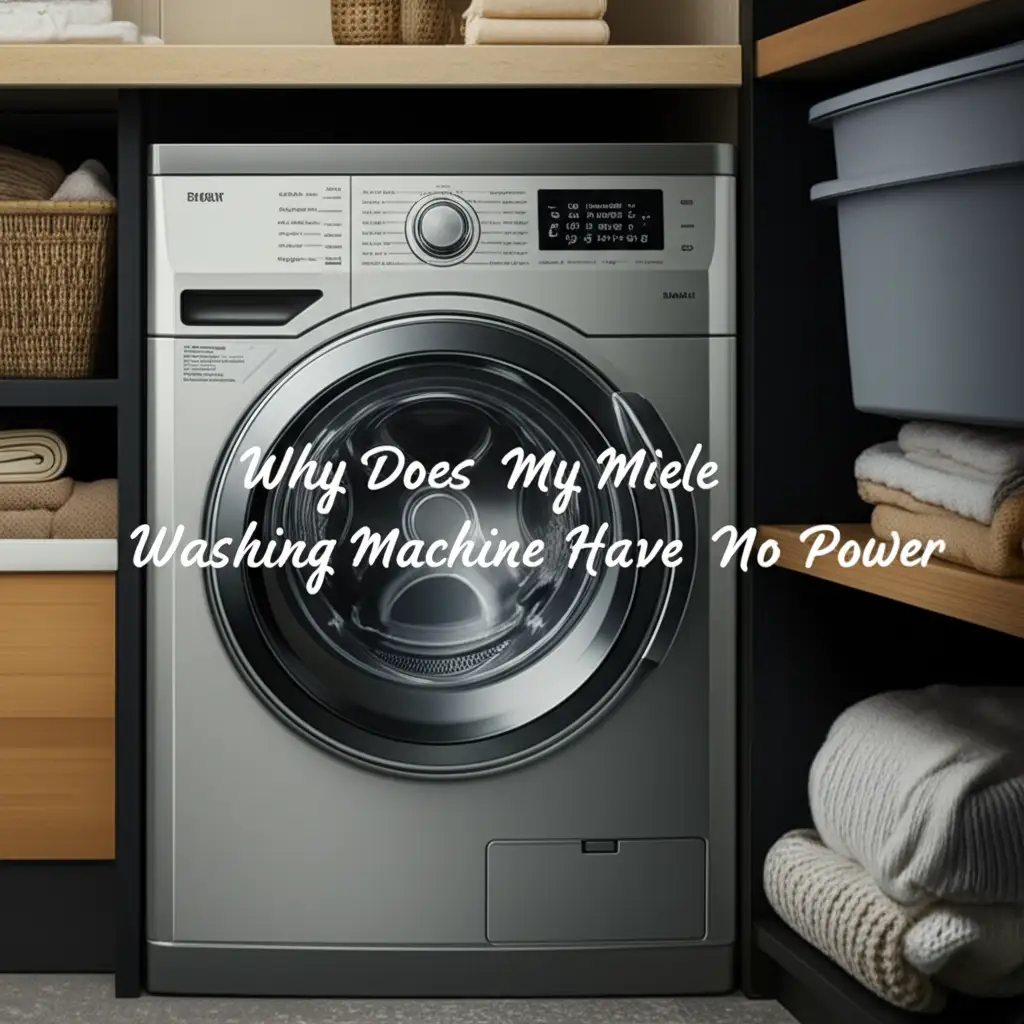
Miele Washing Machine No Power? Here’s Why & How to Fix It
A dead Miele washing machine can stop your laundry day cold. You rely on your Miele for its excellent performance and durability. So, it is very frustrating when your Miele washing machine has no power. This problem can seem serious, but many power loss issues have simple fixes.
I understand how irritating it is when your appliance does not respond. This guide will help you understand common reasons for a Miele washing machine power loss. We will walk through simple troubleshooting steps you can perform yourself. You can get your machine running again quickly. This article covers basic checks, internal component issues, and when to seek professional help.
Takeaway
- Always check the power source first, including outlets and circuit breakers.
- Verify the door is properly latched and the child lock is off.
- Perform a basic reset of your Miele washing machine to clear glitches.
- Inspect for visible signs of damage like frayed cords or leaks.
- Call a certified technician if internal components like the control board or motor are suspected.
Your Miele washing machine has no power likely due to a tripped circuit breaker, an unplugged cord, a faulty power outlet, or a door not fully latched. Less common causes include a damaged power cord, a blown internal fuse, or a problem with the main control board.
Checking Your Power Source: The First Step
When your Miele washing machine has no power, the very first place to look is its connection to electricity. People often overlook these basic checks. Yet, they are the most common reasons a machine appears dead. We must confirm the machine receives power.
Start by checking the wall outlet where your Miele washing machine plugs in. The cord might be loose or entirely unplugged. Gently push the plug firmly into the outlet. Make sure it sits flush against the wall.
Inspecting the Power Cord
The power cord itself can be a source of trouble. A damaged cord prevents electricity from reaching the machine. Look closely at the entire length of the power cord. Search for any cuts, frays, or pinch marks. These damaged areas can interrupt the power flow.
A broken cord can also be a safety hazard. If you find any damage, do not use the machine. You must replace the cord or call a technician. Using a damaged cord can lead to electric shock or fire.
Resetting the Circuit Breaker
Your home’s circuit breaker protects against electrical overloads. If the washing machine pulls too much power, the breaker might trip. This shuts off power to that specific outlet. Go to your electrical service panel. Locate the breaker labeled for your laundry area.
It might be in the “off” position or halfway between “on” and “off.” Flip it completely to the “off” position first. Then, push it firmly to the “on” position. If it immediately trips again, a deeper electrical issue might exist. You should then contact an electrician. This issue is not specific to your Miele washing machine itself.
Testing the Outlet
To ensure the outlet works, plug another small appliance into it. A lamp or a phone charger works well. If the other appliance powers on, the outlet is fine. This means the problem lies with your washing machine. If the other appliance also fails to power on, the outlet is truly dead. This points to a larger home electrical issue, not just your Miele.
Sometimes, outlets linked to a Ground Fault Circuit Interrupter (GFCI) can trip. This is common in laundry rooms. A GFCI outlet has “reset” and “test” buttons. Press the “reset” button firmly. If it clicks and stays in, the outlet has power again. If it keeps tripping, there could be a short circuit. Your Miele washing machine might have an internal fault. You can then look at Do It Yourself Washing Machine for basic repair guidance.
Common Machine-Specific Power Issues
Beyond the basic electrical checks, your Miele washing machine has no power might stem from internal safety mechanisms or simple user errors. Miele machines are designed with advanced features. These features can prevent operation if certain conditions are not met. Understanding these can save you time and a service call.
Door Latch or Lock Assembly
The door latch is a critical safety feature. Your Miele washing machine will not power on or start if the door is not fully closed and latched. This prevents water from spilling out during a cycle. It also keeps people safe from moving parts. Many people overlook this simple check. Always give the door a firm push. Listen for a click sound. This confirms the latch engaged properly.
Over time, the door latch mechanism can wear out or become faulty. If the machine does not detect the door is closed, it will not power up. Even if the door looks closed, the internal sensor might not register it. A damaged door latch can prevent any power from reaching the main components. This is a common problem when a Miele washing machine has no power. You might notice the door feels loose. Sometimes, the display will show a door error message if it has enough power for that. If you are having trouble with the door not opening, you can check out Why Is My Miele Washing Machine Not Opening the Door for more information.
Child Lock Feature Engaged
Miele washing machines come with a child lock feature. This prevents children from accidentally starting the machine or changing settings. If the child lock is active, the machine will not respond to any button presses. This makes it seem like there is no power. The display might show a lock symbol or “Loc.”
Refer to your Miele washing machine’s user manual to disable the child lock. The method varies between models. Typically, you press and hold a specific combination of buttons for a few seconds. Common combinations include holding the “Start” button or a specific program button. Once deactivated, the lock symbol disappears. The machine should then respond.
Delayed Start or Program Selection Errors
Modern washing machines have a delayed start function. If you accidentally activated this feature, the machine will appear to have no power. It is simply waiting for a pre-set time to begin. Check the display for a timer countdown or a “delay start” indicator. To cancel, usually, you press and hold the “Start/Stop” button. Or, you can rotate the program selector to “Off” and then back to your desired cycle.
Sometimes, an incorrect program selection or a glitch in the machine’s software can cause power issues. If you turned the dial or pressed buttons quickly, the machine might be confused. Turn the machine off completely. Wait for about 30 seconds. Then, turn it back on and select your desired program carefully. This simple reset can often resolve minor software hiccups. This is a helpful step if your Miele washing machine has no power.
Internal Electrical Component Failures
If basic power and safety checks do not restore power, the issue might be with internal electrical components. These parts manage the flow of electricity within the machine. They convert power for different functions. Problems here can completely cut off power to the entire unit. Diagnosing these requires more technical skill.
Main Control Board (PCB) Issues
The main control board is the brain of your Miele washing machine. It controls all functions, from sensing the water level to spinning the drum. If this board fails, the machine will not receive commands. It will appear to have no power at all. A surge of electricity or simple wear and tear can damage the control board.
Symptoms of a faulty control board include a completely blank display and no response from any buttons. Sometimes, you might smell a faint burning odor or see visible scorch marks on the board if you inspect it. Replacing a main control board is complex. It often requires specific Miele parts and programming. This task is best left to a certified technician. They have the right diagnostic tools.
Power Supply Board Failure
Separate from the main control board, some Miele washing machines have a dedicated power supply board. This board converts the incoming AC power into various DC voltages required by the machine’s components. If this board fails, no power reaches the main control board or other parts. The entire machine remains unresponsive.
Signs of a power supply board failure are similar to a main control board issue. The machine will be completely dead. There will be no lights or sounds. Damage to this board usually comes from power fluctuations or component failure. It is also an internal component. Repair requires technical expertise and specific Miele parts. Attempting DIY repair without knowledge risks electric shock.
Internal Fuse Blown
Some Miele washing machines include an internal fuse for protection. This fuse is a safety device. It blows if there is an electrical surge or short circuit within the machine. When it blows, it cuts off power to protect other components. This makes the machine appear dead.
Locating and replacing an internal fuse can be tricky. It requires opening the machine’s casing. The fuse is often located near the power input or on one of the control boards. Replacing a fuse requires the correct amperage rating. Using the wrong fuse can cause further damage or create a fire hazard. If you suspect a blown fuse, and are not comfortable with internal electrical work, it is wise to call a professional. This is a possibility if your Miele washing machine has no power.
Wiring and Connector Damage
Inside your Miele washing machine, a network of wires and connectors carries electrical signals. Over time, vibrations or rodent activity can damage these wires. A loose or corroded connector can also prevent power flow. A break in a key wire to the main control board or power switch will result in no power.
Visually inspecting the wiring can be difficult. It often requires removing panels. Look for any chewed wires, loose connections, or signs of overheating. If you find damaged wiring, do not attempt to repair it with tape. This can be unsafe. Replacing the wiring harness or connectors correctly is important. This is a job for someone experienced in appliance electrical repairs.
Water-Related Issues & Safety Shut-Offs
Miele washing machines have advanced safety features. These features include leak detection systems. These systems prevent water damage in your home. If the machine detects water where it shouldn’t be, it can trigger a safety shut-off. This makes the machine appear to have no power. This protects your home and the machine itself from further damage.
Aquastop System Activation
Many Miele models feature an “Aquastop” system. This system is designed to prevent leaks. It includes a sensor at the bottom of the machine’s base. If water collects there, the system activates. It immediately shuts off the water supply and often cuts off power to the machine. This prevents a flood.
If your Miele washing machine has no power and you suspect a leak, check the floor around and under the machine. Look for any visible water. Even a small amount of water in the base can trigger the sensor. You might need to tilt the machine slightly to drain any collected water. Once the water is gone, and the sensor dries, the power might return. However, finding the source of the leak is important. Addressing a leak is key. For more information, you can check out Why Is My Miele Washing Machine Leaking From The Bottom.
Flood Protection Switch
Similar to the Aquastop system, some machines have a float switch in the drip tray. If water fills the tray, the float rises. This activates a switch. This switch then cuts power to the entire machine. This is another layer of flood protection.
To check this, you would need to access the bottom of the machine. This usually means tipping it back or removing a kick plate. Look for water in the base tray. If you find water, you must remove it. Then, find the source of the leak to prevent it from happening again. Once the tray is dry and the float switch resets, power should return.
Overfilling Protection
If the washing machine somehow overfills with water, its sensors will detect this. To prevent overflow, the machine will stop filling and might cut power. This is less common as a direct cause for “no power” from the start. However, if power was lost during a cycle, overfilling could be the reason.
This issue typically indicates a problem with the water inlet valve or the water level sensor. If the machine is overfilled, you need to drain the water manually. Then, investigate why the machine overfilled in the first time. The problem might be a faulty sensor or valve that needs replacement. These components usually do not cause a complete loss of power from a cold start. However, they can lead to an unexpected shut down.
Overheating and Overload Protection
Your Miele washing machine is built with protective measures. These measures prevent damage from overheating or overloading. If the motor or other components get too hot, the machine will shut down. This protects the internal parts from severe damage. It might seem like your Miele washing machine has no power. It is actually in a safety mode.
Motor Overload Protection
The washing machine’s motor can overheat if it works too hard. This often happens with an overloaded drum. Putting too many clothes in the machine makes the motor strain. This increased strain generates excess heat. To prevent damage to the motor, a thermal cut-off switch activates. This switch temporarily cuts power to the motor and sometimes the entire machine.
To fix this, first, reduce the load size. Remove some items from the drum. Let the machine cool down for at least 30 minutes to an hour. The thermal cut-off switch needs time to reset. Once it has cooled, you can try to power on the machine again. Always follow the manufacturer’s guidelines for maximum load capacity. Overloading frequently can lead to premature motor failure.
Power Module Overheating
The power module, or a part of the control board, can also overheat. This usually happens if there is an internal electrical fault or a component drawing too much current. When it gets too hot, its internal safety features will shut down the power. This protects the module itself and other sensitive electronics.
If you suspect power module overheating, you might notice a burning smell. Or, the machine might feel unusually hot to the touch in certain areas. Like motor overheating, the solution is to let the machine cool down. Unplug it from the wall. Give it an hour or two. If the problem persists, it indicates a faulty power module. This requires professional diagnosis and repair. Do not continue to operate a machine that smells like burning or overheats often.
Ventilation Issues
Proper ventilation is crucial for cooling internal components. If the washing machine is in a confined space without adequate airflow, heat can build up. This trapped heat can cause parts to overheat and trigger safety shutdowns. Ensure there is enough space around the machine. Do not push it too close to walls or other appliances.
Check the vents on the machine. Make sure they are not blocked by lint, dust, or other debris. Keeping the machine and its surroundings clean helps ensure proper airflow. Good ventilation extends the life of your appliance. It also prevents inconvenient power loss due to overheating.
User Error and Simple Resets
Sometimes, the simplest solutions are the most effective. What appears to be a major malfunction might be a minor glitch. Your Miele washing machine has no power could be due to a temporary software issue. It might just need a quick reset. Modern appliances are like computers. They sometimes freeze or encounter temporary errors.
Performing a Hard Reset
A hard reset can clear many temporary issues. It essentially reboots the machine’s internal computer. To perform a hard reset, follow these steps:
- Unplug the washing machine: Pull the power cord completely out of the wall socket.
- Wait: Leave it unplugged for at least 5 to 10 minutes. This allows any residual electrical charge to dissipate. It also clears the machine’s memory.
- Plug it back in: Firmly plug the power cord back into the wall outlet.
- Try to power on: Attempt to turn on the Miele washing machine.
This simple action can often resolve unexplainable power loss. It is a good first step after checking the main power source. This might be all you need to get your machine running again. Sometimes, after a power outage, a washing machine might require a reset. While specific to Whirlpool, you can gain some context from How to Reset Whirlpool Washing Machine After Power Outage.
Checking Program Cycle Completion
Sometimes, users mistake a finished cycle for a dead machine. The machine powers down automatically after completing a wash cycle. This is normal behavior. Check if the cycle indicator lights show that the program has finished. The display might be blank because the machine is in standby mode.
If you believe a cycle completed, try opening the door (if it unlocks) or simply pressing the power button. If the door is locked, it might still be in a cool-down phase. Or, it could be a delayed door unlock. Give it a minute or two after the cycle ends.
Control Panel Glitches
The control panel might be faulty, making it seem like the entire machine has no power. Sometimes, only the display goes blank, but the machine still has power internally. This would mean you cannot interact with the machine because the input method is broken. For specific display issues, you might find more information on Why Is My Miele Washing Machine Display Not Working.
Try pressing the power button firmly several times. If there is a light behind it, see if it flickers. A completely unresponsive control panel could point to a faulty power button itself. It could also point to a connection issue to the main control board. If the display is completely dark and unresponsive, and a hard reset does not work, the control panel assembly might need replacement.
When to Call a Professional
While many no-power issues can be resolved with simple troubleshooting, some require expert intervention. Knowing when to call a professional saves you time, prevents further damage, and ensures safety. Dealing with internal electrical components can be dangerous if you lack the necessary skills and tools.
Complex Electrical Issues
If you have checked the power outlet, circuit breaker, and power cord, and the machine still has no power, the problem likely lies within the machine’s internal electrical system. This includes:
- Main control board failure: This is the most common cause of a completely dead machine after basic checks.
- Power supply board malfunction: This board delivers power to all components.
- Internal wiring damage: Beyond simple visual checks, diagnosing wire issues can be complex.
- Motor or pump issues: If these components have short circuits, they can trip internal fuses or protective relays.
These repairs involve working with high voltage components. They require specialized diagnostic tools. A certified Miele technician has the training to safely diagnose and replace these parts. They also have access to genuine Miele replacement parts.
Safety Concerns
Anytime you suspect an electrical fault, especially if you smell burning, see smoke, or hear buzzing sounds, disconnect the machine immediately. Do not attempt to use it again. Electrical fires and shocks are serious hazards. A professional ensures the repair is done safely. They follow all electrical codes and manufacturer guidelines. Your safety is paramount.
Warranty and Specialized Tools
Miele appliances often come with extended warranties. Attempting DIY repairs on internal components can void your warranty. Before opening the machine, check your warranty terms. If the machine is still under warranty, calling authorized Miele service is the best option. They will perform the repair at no cost if the issue is covered.
Miele technicians also have specialized diagnostic tools. These tools can communicate with the machine’s internal systems. They can pinpoint the exact faulty component quickly. Without these tools, troubleshooting complex issues can be a guessing game. This leads to unnecessary part replacements or wasted effort.
Avoiding Further Damage
Incorrect diagnosis or improper repair can cause more damage to your Miele washing machine. Replacing the wrong part or installing it incorrectly can lead to further component failure. It can also create new safety hazards. A professional repair ensures the job is done right the first time. This protects your investment in a high-quality Miele appliance. They know the intricacies of Miele machines. They can make sure the repair lasts.
Frequently Asked Questions
What is the first thing to check if my Miele washing machine has no power?
The first thing to check is the power source. Ensure the machine is plugged firmly into a working wall outlet. Also, check your home’s circuit breaker box. Locate the breaker for the laundry area and confirm it has not tripped. Test the outlet with another appliance to verify it has power.
Can a power surge cause my Miele washing machine to lose power?
Yes, a power surge can definitely cause your Miele washing machine to lose power. Surges can damage internal components like the main control board or blow an internal fuse. This is why many machines have surge protection features. If a surge occurs, the machine’s safety mechanisms cut power to prevent further damage.
How do I reset a Miele washing machine if it has no power?
To reset a Miele washing machine, unplug it from the wall outlet completely. Wait for at least 5 to 10 minutes to allow all residual power to drain. Then, plug the machine back in firmly. This hard reset can clear minor glitches causing the power loss.
Does a Miele washing machine have an internal fuse?
Some Miele washing machines have an internal fuse. This fuse acts as a safety device. It blows to protect sensitive components from electrical overloads or short circuits. Locating and replacing it requires opening the machine’s casing. It is best done by a qualified technician due to electrical safety risks.
Why is my Miele washing machine display not working, but the machine has power?
If your Miele washing machine display is not working, but the machine still has some internal power (e.g., lights are on, or you hear a hum), the issue might be with the display panel itself. This could be a loose connection, a faulty display board, or a software glitch affecting only the visual output. Try a hard reset first. For more details, see Why Is My Miele Washing Machine Display Not Working.
What if my Miele washing machine smells burnt and has no power?
If your Miele washing machine smells burnt and has no power, immediately unplug it. A burning smell indicates an electrical component is overheating or has short-circuited. Do not attempt to use the machine again. This is a serious safety hazard. Contact a professional Miele service technician right away for diagnosis and repair.
Conclusion
When your Miele washing machine has no power, it is a significant inconvenience. I understand the frustration of a sudden dead appliance. We have covered many possible reasons for this issue. We started with simple checks like the power cord and circuit breaker. We then moved to more specific machine problems like the door latch or child lock. We also explored internal component failures, such as the main control board or power supply.
Remember to approach troubleshooting systematically. Always start with the simplest, safest steps. These often solve the problem quickly. If you suspect internal electrical issues or detect a burning smell, always prioritize safety. Disconnect the machine from power. Then, call a certified Miele service technician. They possess the knowledge and tools for safe and effective repair. They can get your Miele washing machine back in working order. Regular maintenance and careful use can help prevent future power issues.


